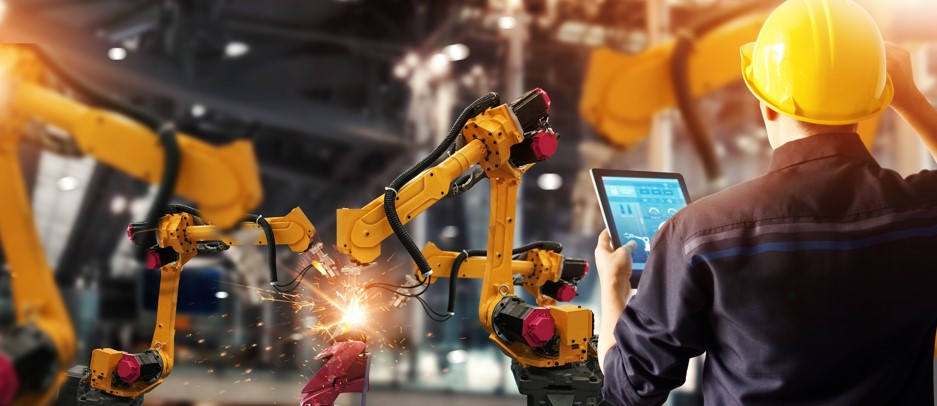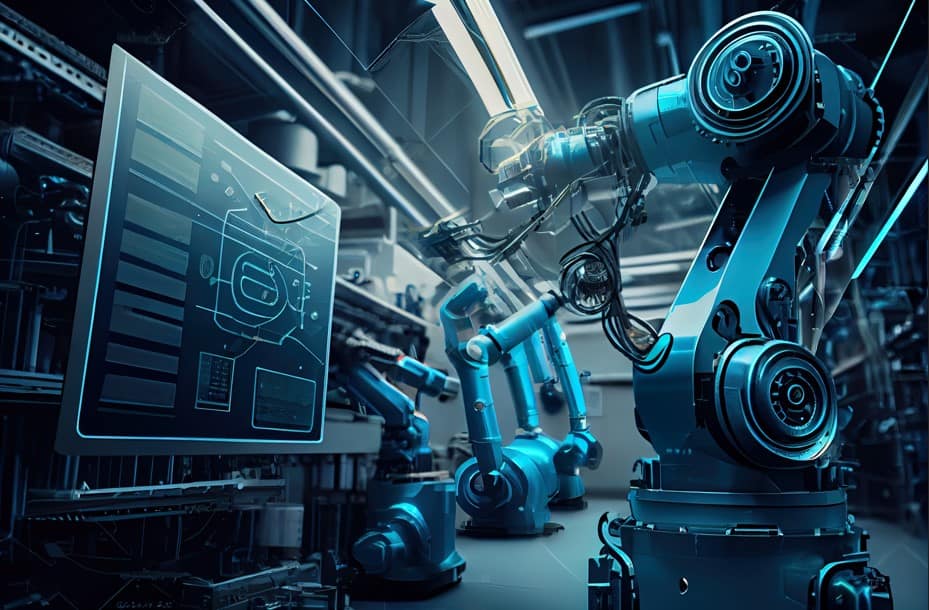
Automation in manufacturing is about more than the ability to automate production processes. Although it can help you streamline your production line, there are several other benefits of shifting from manual to automated systems. Of course, manufacturing automation isn’t without its challenges, either.
To help you make a more informed decision on manufacturing automation and improve your understanding of how it works, we’ve compiled this easy guide. At HighGear, we’re about helping you optimize your organization to stay ahead of the competition. So, let’s explore what automation in manufacturing can do for you.
Understanding Automation In Manufacturing

Automation in manufacturing refers to using technology and machines to perform specific tasks in the production process. It can also be done with little to no human intervention. The primary purpose of this digital transformation toward automation is to boost efficiency, productivity, and accuracy – all while reducing the cost of labor.
When you integrate automation into your manufacturing process, you aren’t only streamlining your operations. You’re also lowering the risk of human error and producing higher-quality outputs much faster. In turn, this helps reduce costs and can also keep your business ahead of the competition.
Manufacturing automation tools
There are a variety of manufacturing tools and automation technologies that help to further automation in the manufacturing industry. The most commonly used tools are robots and artificial intelligence.
- Industrial robots: These robots are typically used for repetitive tasks like assembly, welding, painting, and packaging along production lines. Ultimately, they help to improve the speed and precision of these tasks.
- Artificial Intelligence (AI): AI systems can analyze data and optimize production processes based on the information they receive. This can help you make more informed decisions and improve your operational efficiency.
Types of automation in manufacturing
There are five main types of automation in manufacturing, which overlap with tools and technologies used in the manufacturing sector. Combined with techniques like lean manufacturing, these automation systems can completely transform your production line.
1. Fixed automation
Fixed automation (also known as hard automation) has been specifically designed for high-volume, repetitive tasks.
Generally, this type of automation requires specialized equipment and machinery that has been pre-programmed to perform certain manufacturing tasks consistently and at high speeds. For example, fixed automation is commonly used in assembly lines in the automotive industry and in packaging processes.
Fixed automation is a great choice for mass production. This is where the same product is produced in large quantities. While it’s known for its efficiency, hard automation also lacks flexibility. You may need to invest in new equipment or completely reconfigure your production line or tasks before you can implement this industrial automation system.
2. Programmable automation
Programmable automation is mostly used in batch production, where manufacturers produce their products in groups or batches. What makes it a popular choice for this application is that it allows for systems and equipment to be reconfigured. This is often necessary in batch production because the systems need to accommodate different variations or styles of your product.
The machinery is then controlled by programmable logic controllers (PLCs) or similar control systems. They help in cases where quick adjustments are necessary without any downtime.
In most cases, programmable automation is used for industries where consumer demands constantly change. It’s also extremely beneficial for industries where multiple product types are made on the same production line, like electronics manufacturing.
3. Flexible automation
Flexible automation refers to systems that can easily be reconfigured to handle changing product demands. Essentially, it’s used for on-demand production since it can support a range of operations. This includes small-batch production and mass customization, which is particularly valuable in manufacturing consumer goods and pharmaceuticals.
Using computer-controlled machinery, this type of work automation allows for quick changes in your production process. That way, it can easily handle different products or production volumes. It’s also ideal for environments where product specifications tend to vary, or there’s a need for customization.
4. Industrial Internet of Things (IIoT)
The Industrial Internet of Things plays an incredibly important role in modern manufacturing by enabling the creation of smart factories. IIoT helps connect machines and devices with sensors along the production lines, which allows them to share real-time data and information.
Using this, you can monitor, control, and optimize your manufacturing processes. Additionally, by taking advantage of data analytics and machine learning, you can:
- Predict your maintenance needs
- Improve efficiency
- Make data-driven decisions
- Enhance your overall production performance
5. Computer-integrated manufacturing (CIM)
Computer-integrated manufacturing uses various manufacturing systems and processes to automate the entire production line. It combines computer-aided design (CAD) with computer-automated manufacturing (CAM) and other automation technologies to create a seamless flow between design and production.
CIM ensures that all of the components of the manufacturing process are interlinked. This includes:
- Design
- Engineering
- Quality control
- Distribution
In turn, this leads to more efficiency, reduced lead times, and better quality control.
Benefits Of Automation In Manufacturing
There are tons of benefits to automation in manufacturing. From better efficiency to scalability, the most common advantages include:
Increased efficiency
Automation significantly speeds up your production processes while maintaining a high level of precision and consistency. By using machines and robotic systems, you can reduce your cycle times and increase throughput.
Automated systems can operate continuously without getting tired. This means you’ll have access to 24/7 production capabilities. In turn, you’ll experience shorter lead times and be able to meet customer demands more effectively.
Better product quality
One of the most evident benefits of automation is the reduction of human error. Of course, this directly contributes to better product quality.
Since automated systems are designed to carry out tasks accurately and consistently, they can minimize the risk of defects and variations in the manufacturing process. With this level of continuous quality control, you can benefit from higher-quality products. Additionally, when your products meet or exceed your customer’s expectations, you’ll spend less on reworks or returns.
Cost savings
Automation can help to lower production costs by reducing expenses associated with labor and waste. So, by replacing manual labor with automated systems, you can benefit from significant savings.
Having workflow automation for your manufacturing processes also frees up resources, which can be allocated to more valuable tasks. As a result, you won’t spend money on resources for low-value tasks and instead can assign them to activities that will be more financially beneficial.
Automation optimizes your use of materials, too, leading to less scrap and waste. This results in increased profitability since you can produce more products at a lower cost.
Worker safety
When you automate dangerous or high-risk tasks, you can increase safety on the factory floor. Robots and other automation technology can take over hazardous activities, such as handling heavy loads or toxic substances.
In turn, automated manufacturing not only protects your workers from potential injuries but also allows them to focus on more skilled tasks that require a human touch.
Better decision making
Unlike old and outdated legacy systems, an automated manufacturing system can gather and analyze data in real-time. Using this data, you can get better insights into your production performance and market trends so you can make more informed, data-driven decisions.
Using the integrated analytics of an automated workflow platform like HighGear, you can also:
- Identify inefficiencies
- Optimize your manufacturing processes
- Improve your operational strategies
- Boost your production performance and competitiveness
Scalability
Flexible automation can help you to scale your production according to changing customer demands. Since this type of automation can accommodate different types of products or volumes, it makes it easier to adapt to fluctuations in the market.
This scalability enables you to respond more effectively to your customer’s needs without compromising on efficiency or product quality.
Challenges Of Automation In Manufacturing
Automation in manufacturing isn’t without its challenges. However, with a comprehensive workflow platform like HighGear and quality automation technology, you can easily overcome these hurdles. Still, it’s important to know what difficulties you may face when implementing manufacturing automation.
Initial investment
Adopting advanced automation systems into your manufacturing process may require a significant investment upfront. This includes purchasing new machinery, tools, infrastructure upgrades, and software systems.
Because of this, small and medium-sized organizations may not be able to compete with larger businesses that have the capital to invest in automation. Additionally, the return on investment (ROI) may not be apparent immediately.
Fortunately, you can cut down on software costs with HighGear. Before you invest in our workflow solutions, you can schedule a demo for free. That way, you can test how our business process management software works within the larger context of your production line.
Workforce upskilling
In order for your workforce to use your new technology efficiently, it may be necessary to upskill your workers. Of course, this can result in costly training fees and a loss of resources during the training period.
However, when you use HighGear, you can benefit from no-code automation software that has almost no learning curve. Our solutions are intuitive and easy to use, meaning you can train your staff in less than half of the time you would usually require for them to learn overly complicated software and systems.
Integration
Integrating new technologies into your existing manufacturing processes can be time-consuming and tricky to manage. This means that you may need more comprehensive planning and to invest in integration tools. In some cases, you may also need to explore custom development which can add to the overall cost of automation.
If you want to spare yourself the headache of paying for additional tools when it comes to your workflow software, then you’re in luck.
At HighGear, our staff is equipped with the expertise and skills to manage your business management software deployment from start to finish. They will also work with you throughout the process to help you stay informed and customize your workflows to your exact needs.
FAQs
What are the long-term cost implications of implementing automation in manufacturing?
Implementing automation in your manufacturing business can result in several long-term cost implications. These may include:
- Reduced labor costs
- Lower operational costs
- Higher maintenance costs
- High initial investment cost
These factors have the potential to balance out. However, it’s important to do a cost-assessment before you invest in automation technology.
How can companies manage the transition from manual to automated processes effectively?
Managing the switch from manual to automated processes requires careful planning. Still, there are a few different strategies you can use:
- Conduct a needs assessment
- Set clear objectives and examine how automation can help you achieve these goals
- Invest in the right technology
- Implement your automation gradually
- Continue to monitor and evaluate the performance of your automation technology
Final Thoughts
Manufacturing automation is the way of the future. And, while it may come with certain challenges, these can easily be minimized or overcome with the help of software systems like HighGear. Plus, with the numerous advantages of automation, these challenges are worthwhile for the long-term payoff.
